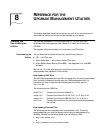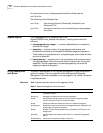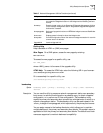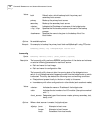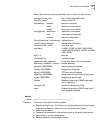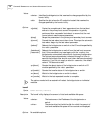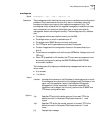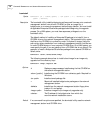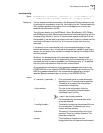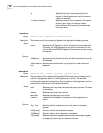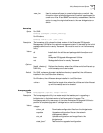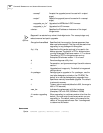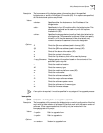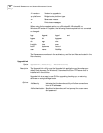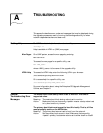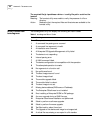
Utility Descriptions and Syntax 79
bcmloadconfig
Syntax bcmloadconfig [-s “<service1> [<service2>...]” | -l <line number>] [-i] -f
<config file path>/<filename> <device> [-b] [-t:<reboot timeout>]
Description You can execute multiple commands on the Enterprise OS user interface at once
by entering the commands in a text file, then loading the file. The bcmloadconfig
utility copies a specified configuration file to the bridge/router or switch and
executes the commands in the file.
The utility can execute only the SETDefault, SHow, SHowDefault, ADD, DELete,
and SAVEbgp commands. Blank lines and comment lines (lines beginning with the
# character) are allowed in the file. If the command requires more than one line,
the backslash (\) can be used to terminate the current line and to indicate that the
command continues on the next line. A line cannot contain more than one
command.
If you specify one or more services, only the commands belonging to those
services are executed. Up to 10 services can be specified. Instead of specifying a
service, you can specify a line number to indicate the starting line number within
the file to execute.
By default, the bcmloadconfig utility terminates whenever it detects a bad
command, a command that is not supported by the bcmloadconfig utility, or a
command that fails to execute successfully on the bridge/router. If -i is specified,
the utility continues execution when an error is encountered.
All commands and comments and any generated messages are written to the
CONFIG.LOG file in the /tftpboot/CLIENTS/<MAC address>/cfg/ directory on the
NMS. Any passwords specified in the commands are replaced by a string of
asterisks. Skipped commands are not written to the CONFIG.LOG file.
Values
-s “<service1> [<service2>...]” Only commands found for these services are
executed. Up to 10 services may be specified.
The default is to execute the configuration
commands for all services.
-l <line number> The Line in the configuration file to be
executed. Comments and blank lines are
considered lines in the file.
-s and -l are mutually exclusive.
-i Continue executing commands even when
errors are detected.
-f <config file path> The directory containing the command file that
is to be executed. The default path is the
current working directory.
<filename> The name of the command file that is to be
executed. There is no default filename. This
parameter is required.
<device> The IP address or hostname of the
bridge/router that will execute the commands.



